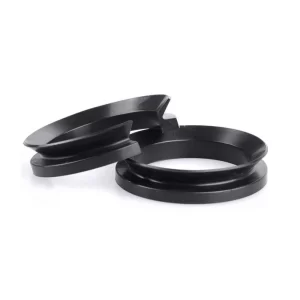Hydraulic seals come in a form of circular rings that are used between hydraulic cylinder components. There are a number of components within a hydraulic cylinder of which hydraulic seals happen to be part of. These seals prevent leakages in cylinders.
Hydraulic seals have spaces within them that enable them to fit well on cylinders and other devices. They are highly effective and prevent leakages even when fluids are high to their brim.
They are made from a wide range of materials of which some are rubber and polyurethane. Those made from rubber are soft, don’t crack easily and last longer. Those made or Polyurethane are cheaper and common.
Types of hydraulic seals
V-Ring Seal
A V-ring seal is made of rubber and used on shafts to prevent dirt, moisture and other harmful materials from entering an oil seal, housing or any other vital part of shafts.
V – Ring Type S
V-ring seal – type S usually comes in a wide and pointed form. It provides a solid grip on a shaft it has been fixed on and comes in a wide range of sizes.
This type of seal also performs the role of preventing dirt, dust, water, or mixtures of these media from entering while positively retaining oil.
It can be applied by stretching it to fit the shaft that its being mounted on and spins around the shaft during its operation
V – Ring Type A
The typical design of a V-Ring is comprised of the body, the flexible joint and the sealing lip. They are used in combination with other types of seals such as shaft seals and pre-sealing elements for bearings and shafts.
They are mostly used in mechanical and plant engineering fields, electric engines, transmissions, agricultural machines, bearing base and rolling mills.
Shaft seal
Shaft seals prevent the passage of fluids along a rotating shaft. These seals are necessary when a shaft extends from a housing (enclosure) containing oil, such as a pump or a gear box. It comes in a form of leather, rubber and silicone
Most of them are made up of elastic rubber ring which is attached to a metallic ring that is tight around the hole in the housing through which the shaft extends.
Common applications of shaft seals are: Construction machinery, Fork-lift trucks, Injection molding machines, Agricultural machinery, Loading platforms and Standard cylinders














